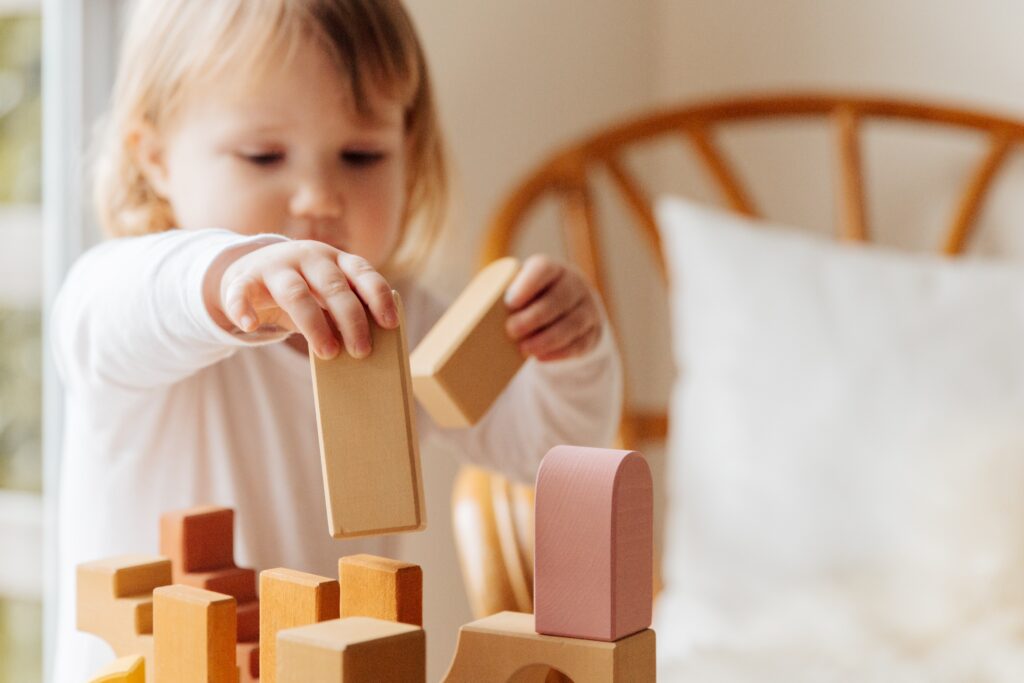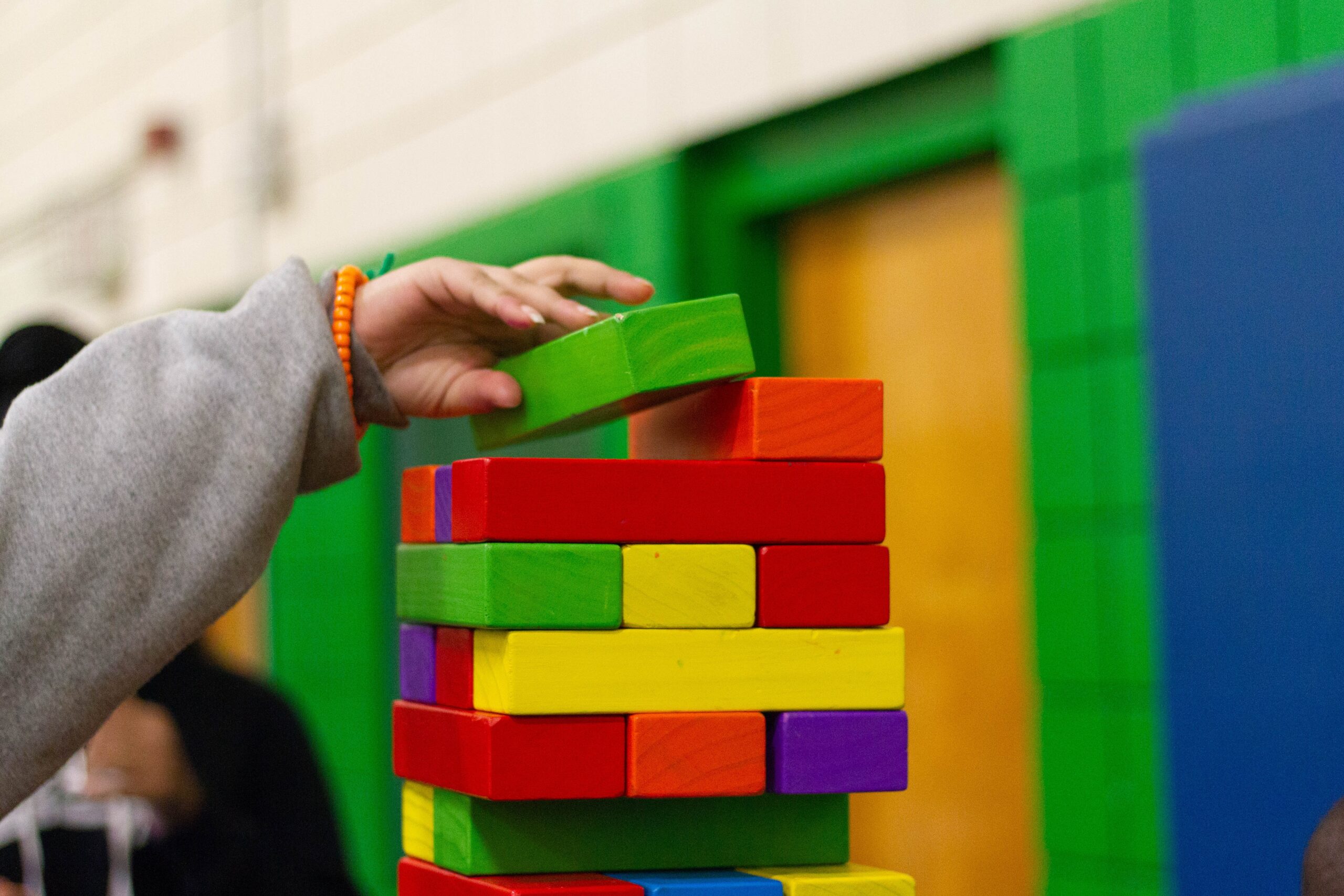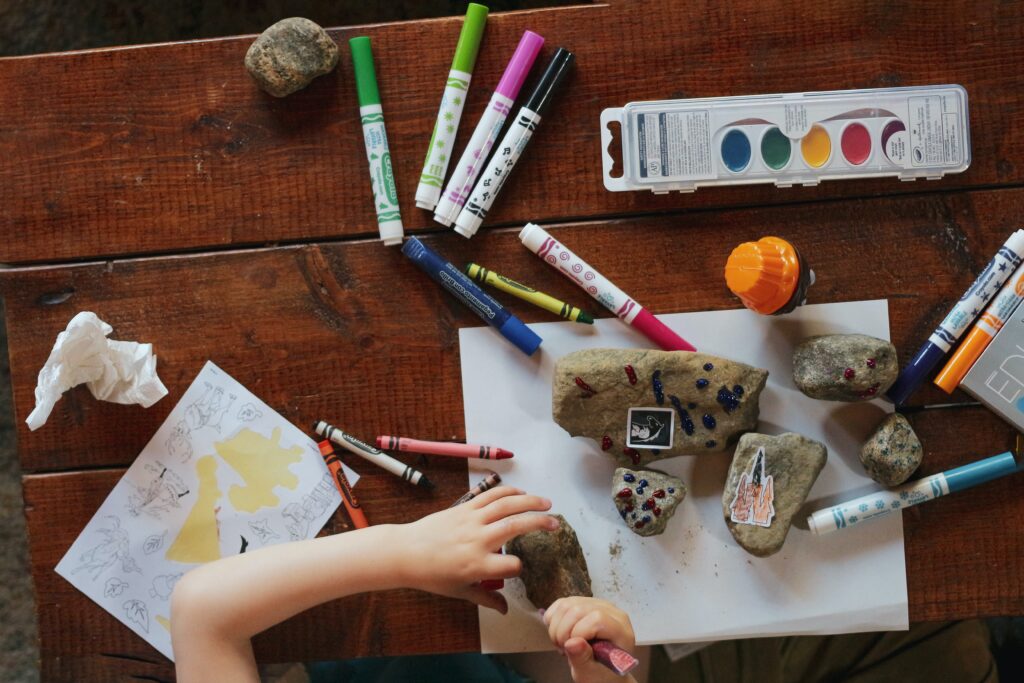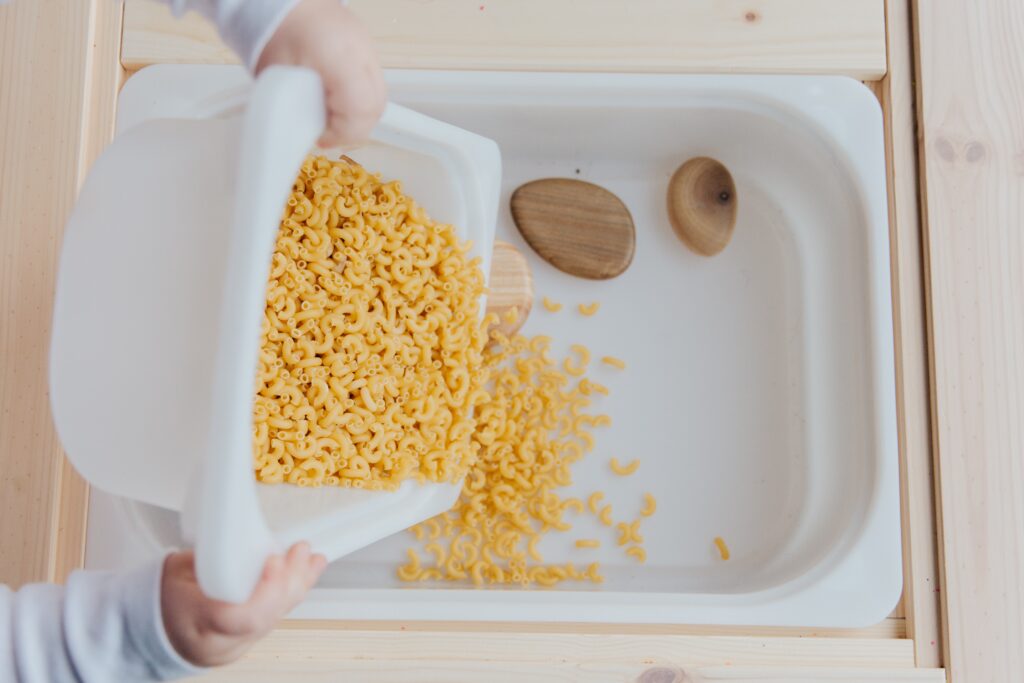Sensory play has an important role in development. Already in the mother’s womb, the child begins to develop certain senses.
In addition to the basic five senses – sight, hearing, touch, smell and taste, I would like to mention two more senses that are not always mentioned, but are very important – the sense of balance (vestibular system) and the sense of deep sensibility (proprioceptive system).
What is the role of sensory play?
From the first day of birth, babies learn through their senses, which is why babies and younger children touch and put everything in their mouths. That way they make different sounds and experiment. In order to stimulate his sense of balance, the child spins in a circle until he falls. This is how children learn. Children who have difficulties with sensory integration, ie. sensory dysfunction (one of the most common examples is children with autism), can have additional benefits if we enhance sensory play.
When it comes to designing sensory play, it is very important to observe the child and see what he likes and what he doesn’t. If we provide a child with autism with too many sensory stimuli that he cannot organize in such a way as to provide a specific motor response (then sensory overload occurs). As always, it is important to apply the principle of simplicity, ie. to start from simple games to complex ones (which expose the child to more stimuli).

From the first day of birth, babies learn through their senses, which is why babies and younger children touch and put everything in their mouths.
Below you can see a couple of sensory play suggestions for each of the senses.
SENSE OF HEARING
– Discover the sound – the first thing we should do is choose the sounds together with the child, it is very important that the child recognizes the sounds. Then we tie a scarf over the child’s eyes, and we play a certain sound that he should recognize. Another variation of this game is to hide a toy that makes a sound, and the child should find it.
EYESIGHT
– Games with a flashlight – if the child does not like bright light, turn off the light in the room or darken it and make a game with flashlights. You can also practice imitating these, by first showing a movement with a lighted lamp, and then the child should repeat it.
– Sensory bottles – pour water and baby oil (proportion 3:1) into the bottle and add glitter, small beads, figures and talk or ask the child to show what he saw.
SENSE OF SMELL
– What do I smell – as with the game for the development of the sense of hearing, we will blindfold the child and offer him to smell different smells and ask him to recognize them.
– Scented felt-tip pens – for children who do not like strong smells, a gentle first step might be to draw with felt-tip pens that are perfumed. There are some that are milder in smell and should not irritate.
SENSE OF TASTE
– Play and try different tastes and compare them with each other, apart from taste recognition, it is very important for this sense to develop the oral muscles, which play an important role in the development of speech. You can encourage this by making different funny faces, blowing balloons, blowing and drinking water through a straw,”¦
SENSE OF TOUCH
– Corn box – pour corn (or rice, beans, millet,…) into a larger plastic box and insert marbles (or any other smaller figures, shapes,…), the child has the task of digging up the buried treasure by touch.
– Some other game suggestions are: drawing with hands and fingers with foam, tempera, ice,…
PROPRIOCEPTIVE SYSTEM – deep sensibility, i.e. body position in space and coordination
– Jumping, climbing, running games – play on playgrounds, climb and crawl, if you don’t have the opportunity to go to the playground, make one at home, jump on cushions, crawl under chairs and tables,…
– Pillow fight – choose pillows that cannot hurt the child and start a “fight”, this type of game will most likely be attractive to children who like a stronger grip, because they don’t like light ones.
VESTIBULAR SYSTEM – balance
– Schoolhouse – we all played schoolhouse when we were little, and we didn’t even realize that by doing so we stimulated the vestibular system and balance by jumping on one leg.
– Twister – a game where a certain part of the body should be placed on a certain color, e.g. put your left hand on yellow.
About the author: MSc Marija Končar is a master defectologist by profession, author of the blog pitajtedefektologa.com. She loves her job and wants to transfer her emotions and knowledge to the texts she writes. The working principle she advocates is that the best way to learn is through play.



















